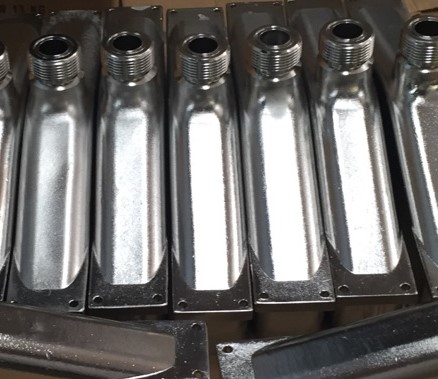
From the tallest skyscraper to the smallest, most intricate medical device, stainless steel is an essential component to many of the most common tools and structures of modern industrial life. As such, it’s essential to the lifelong performance of stainless-steel metal parts that their surfaces are checked routinely for surface defects that can have a […]
From the tallest skyscraper to the smallest, most intricate medical device, stainless steel is an essential component to many of the most common tools and structures of modern industrial life.
As such, it’s essential to the lifelong performance of stainless-steel metal parts that their surfaces are checked routinely for surface defects that can have a dramatic impact on the durability and strength of the metal tool or structure, as well as the vibrancy of its shine.
What is Stainless Steel?
Contrary to popular belief, the term “stainless steel” doesn’t refer to a single metal alloy at all, but rather a group of iron-based alloys that contain several other foundational elements within its composition.
The main component is chromium at levels above 10 percent, but stainless steel may also contain trace levels of carbon, nickel, silicon, manganese, titanium, molybdenum, nitrogen, niobium, and more.
Can Stainless Steel Erode?
There’s a reason stainless steel is the most common metal choice for countless industry applications—its incredible resistance to corrosion, which can be attributed to the chemical combination of iron and chromium.
As the stainless-steel component is fashioned, the chromium elements create a thin but powerful passive layer on the surface of the part, preventing the accumulation of rust that so often leads to the erosion of other metals.
Detect Stainless Steel Surface Defects
There are a few methods for defect detection for metal parts and structures which range from the simple visual inspection to professional evaluations in a lab setting.
While organizations within the industries of construction or healthcare likely adhere to federal, state, or industry guidelines for defect detection, there are a number of ways individuals and other organizations can detect stainless steel surface defects and decide whether a professional metal finishing treatment such as electropolishing may be needed.
- Identify and take note of all stainless-steel components of your metal project or tool.
- Check the edges, curves, and points of the stainless-steel metal component for sharp ridges or cracks.
- Inspect the surface of the component for dullness, scratching, and depressions.
- Place pressure on the metal component to test its strength and durability manually.
For more information or to arrange for a free electropolished sample part, contact us today!